Want to catch more fish?
We check out the best fish finders on the market in 2020
One of the ways to get an advantage on our finned friends is through the use of a fish finder. To save you some time researching all the best units, we’ve reviewed the top fish and depth finders on the market.
As the saying goes, a bad days fishing is better than a good days working (no idea who said it but it sounds right in my book), so imagine how good it would be if you could catch fish every time you went fishing! Bloody awesome right!!
Anyway, let’s get straight into our fish finder comparison and reviews.
In our opinion, these are the 9 best fish finders for 2025:
- Lowrance HOOK2 Fish Finder/Depth Finder – Best Overall Fish Finder
- Humminbird HELIX 5 SI/GPS Combo – Best Humminbird Fish Finder
- Garmin Striker Plus 4 with Dual-beam – Best Affordable Fish Finder
- Lowrance FishHunter PRO – Best Wireless Fish Finder
- Deeper Pro Wireless Fish Finder – Best portable Fish Finder
- Garmin ECHOMAP Plus 73cv
- Garmin ECHOMAP Plus 43cv
- Raymarine Element 7 HV
- Humminbird Helix 7 Chirp
Fish Finder Reviews 2025
Stren High Impact Monofilament Fishing Line
MONOFILAMENT
Moving away from the braided lines, Stren High Impact Monofilament Line keeps up the trend of a variety of colors to choose from. With four colors at your disposal, you’ll be able to find the perfect blend for the job at hand. Possibly one of the most customizable options on this list, it also allows youto choose from a variety of sizes from ten to thirty pounds.
The structural composition of the line makes it stand up against the worst possible conditions that any environment decides to throw at you. From saltwater to freshwater, this shock-resistant line remains tough and stable, while still being sensitive enough to give you the best chance at a great day on the water.
What we like
- Strong monofilament design
- Shock resistant
- Sizes from 10 to 30 pounds
- Holds up against extreme weather
What we don't like
Berkley Trilene Big Game Monofilament Custom Spool
MONOFILAMENT
Berkley makes another entry on our list with their dependable monofilament line.
This line comes in a dizzying array of colors, allowing you to style your rod to fit any environment or personal taste. Alongside its numerous color and size options, you can count on this line’s strength. It will reel in the trophy catches you’ll be talking about for years to come.
The sheer power of the line itself should be enough to make it a viable option for any fisherman’s tackle box. But the shock and abrasion resistance really make it the complete package which is a must have when fishing for big game.
What we like
- Shock and abrasion-resistan
- Seven colors to choose from and numerous sizes
- Dependable strength
What we don't like
Berkley, Trilene XT Monofilament Line Spool, 300 Yards, 0.014″ Diameter, 10 lb Breaking Strength, Low-Vis Green
MONOFILAMENT
Sun Dolphin Review
Main Features
What we like
What we don't like
SpiderWire Stealth Superline Braid Fishing Line
What we like
What we don't like
KastKing SuperPower Braided Fishing Line – Abrasion Resistant Braided Lines – Incredible Superline – Zero Stretch – Smaller Diameter – A Must-Have!
Main Features
What we like
What we don't like
KastKing KastPro Braided Fishing Line – Spectra Super Line – Made in The USA – Zero Stretch Braid – Thin Diameter – On Biodegradable BioSpool! – Aggressive Weave – Incredible Abrasion Resistance!
Main Features
What we like
What we don't like
Fish Finder Features To Look Out For
There are a lot of different models out there for you to sift through (even specific ice fishing fish finders), and with so many extra features, it’s easy to feel lost at sea looking for the right device for your purposes, or even location… as you might even need a different fish sounder depending on if you’re fishing on Lake Tahoe, or Riggs Lake, for example. Knowing the features that you need and which ones aren’t essential is key to finding a device that meets your standards without breaking the bank (yes, there is such a thing like cheap fish finders)!
By knowing what the features you may encounter are, you can easily prioritize which ones you find most important, and which ones you can live without. So, without further ado, here are some of the most common features you’ll encounter when considering different depth finders, we analysed these as well while writing our reviews for the best fish locators.
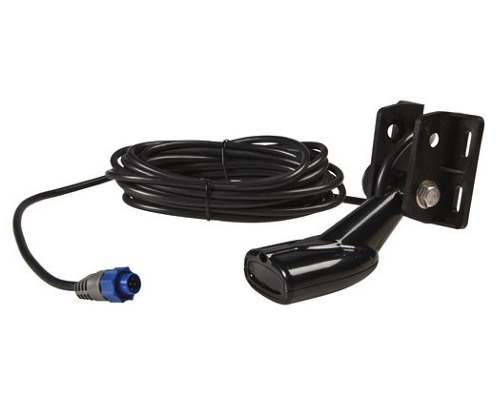
Transducer
The transducer is the part that is used to send out sound waves and give you an idea of what is lurking underneath the water’s surface (assuming you got a decent trolling motor to get you out there). This works a lot like a radio antenna; it emits a sound wave and receives the returning echoes.
Some features that will be essential in a transducer include the cone angle, installation type, and operating frequency. A transducer is able to be mounted in a variety of locations, so it can sit where it is most convenient to you. It is often mounted on a transom or a trolling motor, or even inside the hull of smaller watercraft. You’ll also find that a larger thru-hull unit is available for fibreglass boats.
The transducer you choose strongly depends on your cone angle, so select one that will accommodate the type of fishing you participate in. Wider angles will be less effective in deeper waters while providing a wider view of shallow waters. Keep these things in mind when shopping for your ideal transducer!

Display
Just like the display of an underwater fishing camera, your fish finder’s display is a key feature in how well it works for you. Pay special attention to the display size, the color, contrast, and detail. These will determine how well you are able to discern the returning sonar signals.
One of the most important things to consider in this regard is how many pixels your display has. The more pixels, the clearer and smoother your image will be, allowing for easy deciphering. Most people think it’s worth shelling out the extra cash for a color display if the budget allows as well. This permits your images to “pop” and make them easier to view under the sun’s bright rays.
A larger screen size also increases your ease of reading! At the end of the day, the right display for you all comes down to your preferences. Some you can even read without taking off your fishing sunglasses.

Frequency
Most fish finders you encounter will operate either on a very low kilohertz or a very high one. For the ones you encounter that operate on the lower side of the spectrum, they tend to hover around 50kHz. For those that are on the upper end of the scale, they can range from 192kHz to 200kHz.
This range depends mostly on the area that you are fishing in, and each frequency option comes with its own inherent advantages. Water is capable of absorbing higher frequencies, so the scanning sonars that operate on the lower end (around 50kHz) are able to have a deeper penetration. However, they tend to have wider cone angles, meaning you will find less definition and a greater chance of there being distortion.
Imaging sonars that boast higher frequencies tend to perform at their best in shallower waters. While high-frequency units do not go as deep, they have less susceptibility to distortion and display more definition.
Their methods are the opposite that you will find from low-frequency units, so choosing between high and low frequencies will depend heavily on the location where you are fishing and if it is a deep or shallow water area. Fortunately, you can track down units that operate on both types of frequencies, allowing you to enjoy a crisper image in deep waters.
If you tend to fish in both shallow and deep environments, then you might be best off purchasing one of the units that is able to effortlessly switch back and forth between either frequency.

Cone Angle
We’ve mentioned the cone angle a few times already, in regards to frequencies and transducers. The reason for this is, without your cone angle, neither of these other features would be able to function properly.
When looking for a transducer for a depth finder, many users consider the cone angle to be the most essential feature. The cone angle of a depth finder also works hand-in-hand with its frequency.
Put simply, the cone angle refers to the beam’s width when it is sent out and goes down through the bottom of your fishing boat. This feature is referred to as the cone angle because the shape it begins as is narrow at the top, and steadily widens as it delves deeper into the water – much like a cone.
This feature is also known as the transducer beam angle. A wider angle will result in a wider field of view for your sonar signals. Knowing the full breadth of how it works requires an in-depth understanding of math and physics. The simple version is that a wide angle allows you a wider field of vision, while it also reduces sensitivity when the waters are deeper, which can result in distortion of your image.
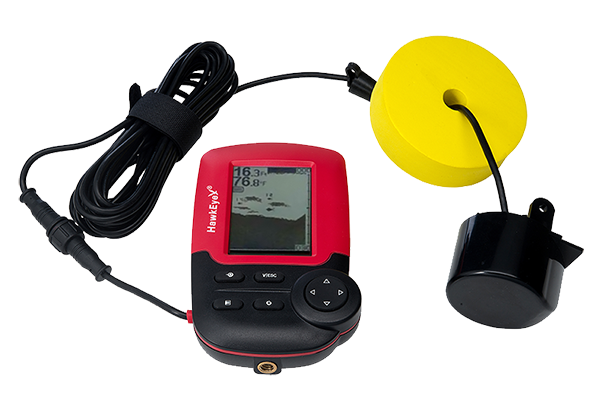
Portable vs. Fixed
You may have heard a bit about portable models, and you may have heard them portrayed as an ideal affordable alternative to the more expensive fish finders that require you to fix them in place. They’re very popular with beginners with fishing kayaks, and a lot of them buy them as dedicated kayak fish finders.
Although portable fish finders continue to become more popular, you truly can’t beat the advanced technology that comes with a traditionally mounted model. Fixed units allow you to mount them just how you want it, and your wires can be hidden with ease by putting them under the floorboards.
Fixed models also offer more stability than portable options, which utilize suction cups to stay in place. They can fall easily at higher speeds for this reason. Fixed units offer more consistency as well, as you don’t need to tune the settings as much as you will with a portable device.
While portable models may seem appealing and a good option if you’re looking for the best budget fish locator, it’s best to opt for a fixed model if you can! You can use them both for small boats, or big ones.
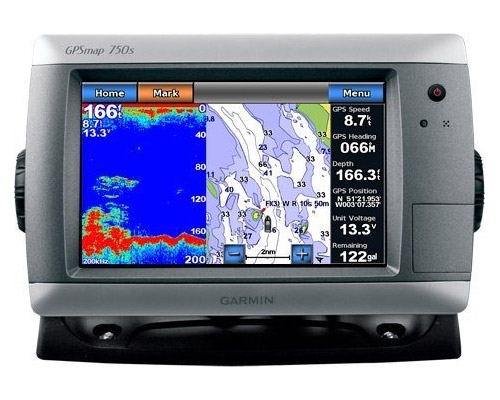
GPS Integrated
GPS, or global positioning systems, are something we all love to have on the road – and they are equally convenient in the water!
GPS can be used to find your way back to dry land with ease and map out the coordinates of local lakes and ponds in the USA (or wherever on the planet) you’d like to explore using mapping software. You also can mark the spots with the highest fish densities, so you can come back time and time again to take advantage of your rare finds!
Many modern models come equipped with GPS features, but whether or not you need this in your own fish finder comes down to personal preference. They are extremely convenient and helpful. However, it’s best not to spend the money on a more advanced model if you don’t think you’ll ever take advantage of the feature!
Most devices with GPS are combination units, able to do both chart plotting and depth sounding. The depth sounder refers to the fish finder device itself, while the chart plotter displays your location constantly, so you don’t need a separate device or rely on questionable cell phone service to know where you are.
Units with GPS also allow for ease in entering different waypoints, so you can mark down structures, launch ramps, or fish. You can select these to revisit them at any time! It’s best to keep these capabilities in mind and decide if you want them for your fishing expeditions to decide if GPS is an important feature to you.
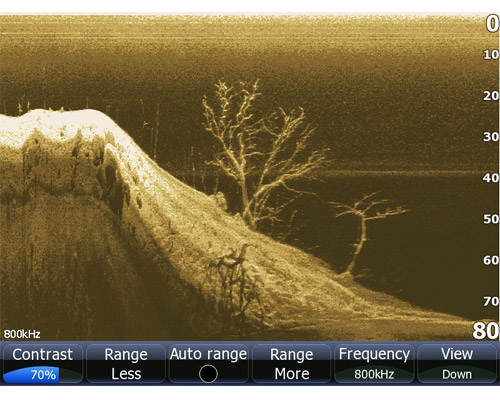
Scanning
There are two methods of scanning that fish finders can conduct: the downscan and the sidescan.
A downscan allows the user to see great detail and even spot individual fish within a structure or school. These scanning sonars are accurate but are typically too powerful for shallower waters. Using them in shallow waters often results in an undecipherable blur. It is also overly focused and can result in a fisher missing activity happening on the boat’s sides.
Sidescans are the other option you might encounter. This scanning sonar able to scan a vast amount of water, covering a greater area. You don’t need to move your boat directly to the area you are looking to scan, and you can scan undisturbed water. However, you won’t have as effective of results in deeper waters.
Some units offer a combination of both downscan and sidescan, so if you can’t decide between the two, then those models are a great option!
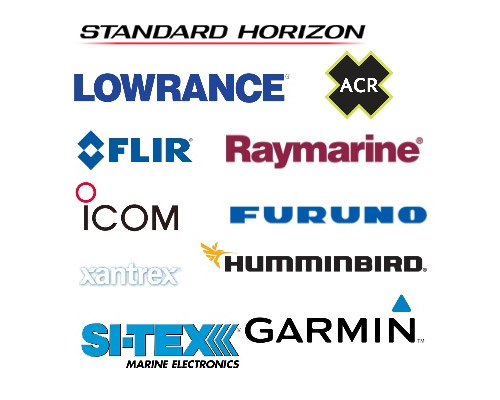
Fish Finder Brands
There are a lot of fish finder brands you’ll see on today’s market, but only a handful offer the high-quality units that fishers can truly rely on for premium depth finders for the money. These brands offer a wide product range, with both standard sonar as well as GPS units.
While model’s overall function will remain constant, the technology becomes more and more advanced with each new model. Inclusions of things like downscan and sidescan can make finding structures – and fish – much easier. In addition, modern 3D technology is bringing even clearer images to the screen. Some of the most brands most famous for their trustworthy products include:
- Furuno
- Garmin
- Humminbird
- Lowrance
- RayMarine
- Simrad
Durability
A key factor in the right fish finder is durability. The most high-quality options will be able to handle a lot of wear and tear from your fishing adventures and still work flawlessly.
Make sure that your unit will be securely mounted and doesn’t break easily for the longest-lasting model with the best results! While other features come down to preference, every fisher should look for a fish finder of the utmost durability, so it will last you for years to come!
Fish Finder FAQs
A fish finder is a device that sends out ultrasonic electrical waves at certain frequencies and when the waves bounce back to the unit it determines the depth of the water. When these waves hit something harder than water, ie a fish, the waves will return to the unit quicker than previously signalling something other than the bottom on the sonar.
There is a wide range of models on the market today, with new technology being released by the top brands regularly. The most common types of fish finders include Portable or Handheld, Fixed/Mounted, Ice Fishing or Flasher, and Wireless / Castable.
Within in each type, there are different technologies used. It is amazing how accurate fishfinders have become at displaying the bottom of lakes and rivers as well as detecting fish. Not only do they scan the bottom, but they can also scan out to the side of your boat, a technology called Sidescan. More recently, Livescan and 3D scan have been introduced which again, provide even more accurate representations of fish and structure.
If your fish finder includes GPS it means it has a Global Positional System which allows you to view your location on a map, no matter where in the United States or America you are (or the world for that matter). This is great for navigating rivers and lakes and placing pins or marks on the map when you locate a good fishing spot or catch a fish. Most models on the market today will include GPS and it is a great safety feature especially when fishing far offshore.
Most fish finder transducers will operate at varied frequencies ranging from 50kHz to 200kHz with some units going up to 400kHz. Basically the higher the frequency the more detail you will see on your fish finder.
The most popular and leading brands in the fish finder market include Humminbird, Garmin, Lowrance, Raymarine, Deeper, Vexilar, Furuno. Not all brands will make models suitable for all types of fishing so be sure to check out what they offer first. Humminbird, Garmin, Lowrance have a wide range of sizes and styles available to suit most fishing methods.
Whilst the majority of fish finder head units are NOT waterproof, the transducers most certainly are, as these are more often than not mounted below the water level. There are a number of waterproof units being released which act as wireless castable units which transmit back to a smartphone. Standard models units should always be kept away from water, and a cover is advisable if left out exposed.
There are many ways to install a fish finder. The most common way for a small boat is a transom mount. This involves mounting the transducer at the rear of the boat just below the water level. The power cord is then fixed either to the side of the boat or through the rear hull and then connected to the head unit. Another method is the thru-hull mount.
This is a little trickier but does not involve any interference /screwing to your boat hull. The transducer is fixed inside the hull of the boat often inside a small container filled with silicon to ensure no gaps or air is between the transducer and the hull. This allows for an uninterrupted signal being sent from the transducer through into the water.
Yes, you most certainly can. Many companies make dedicated fish finders that are ideal for kayaks due to their size and features. With space limited on a kayak and also mounting restrictions, be sure to select a fish finder that is suitable. A small vertical screen fish finder will use up less space than a wide 9” unit. Transducers can either be mounted within the hull, through the scupper holes or over the side using a transducer bracket mount.
Yes, the majority of devices will have a temperature gauge within the transducer. If your transducer is mounted in the water then you will get a good reading of the current water temp. If your transducer is hull-mounted, your reading may be off a few degrees. Knowing the water temp will allow you to determine what types of fish may be at your location.
Most fish finder screens will display the same, unless of course, you are using a new technology such as downscan, sidescan or 3d scan. A typical chirp sonar will show the hard bottom as a yellow band with blue below it. Generally, there will be no colour (or a solid colour) between the water surface (top of the screen) and the bottom. When there are disturbances or other marks showing suspended from the bottom these can be either fish or floating debris such as seaweed. Generally the thicker and bigger the mark, the larger the fish. Keep an eye out for arches, as these are more than likely fish. A large ball can often be a bait ball so keep an eye out for larger dots or blobs around the ball as this is where predatory fish will be.






